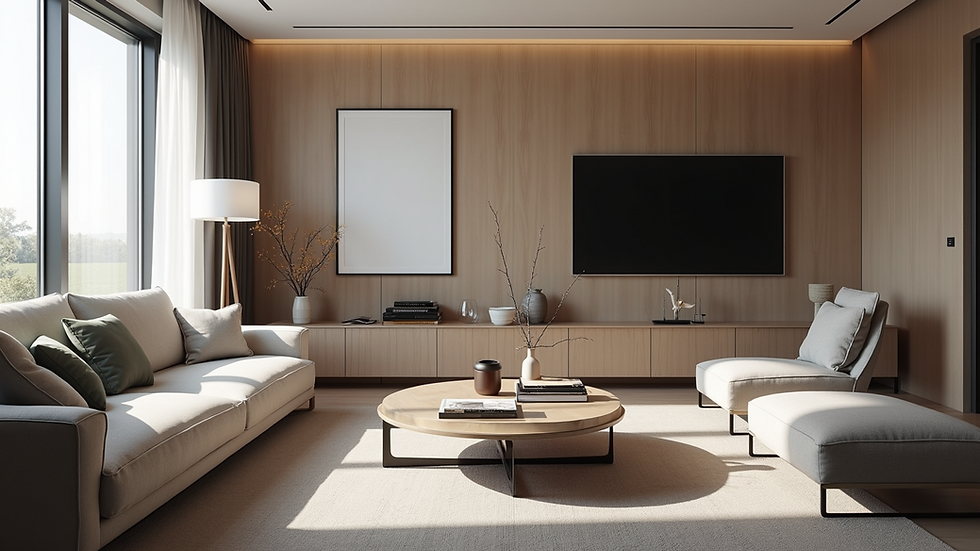Innovative Architectural Solutions for Your Next Project
- tmorgan382
- Aug 22
- 4 min read
Architecture is more than just buildings. It is about creating spaces that inspire, function, and connect with the environment. As we move into a new era of design, innovative architectural solutions are becoming essential for any project. Whether you are planning a residential home, a commercial space, or a public building, embracing new ideas can lead to remarkable results.
In this blog post, we will explore some of the most exciting architectural trends and solutions that can elevate your next project. From sustainable design to smart technology, we will cover various aspects that can make your project stand out.
The Rise of Sustainable Architecture
Sustainability is no longer just a trend; it is a necessity. As climate change becomes a pressing issue, architects are finding ways to create buildings that are environmentally friendly.
Key Features of Sustainable Architecture
Energy Efficiency: Buildings designed with energy efficiency in mind can significantly reduce energy consumption. This includes using high-quality insulation, energy-efficient windows, and renewable energy sources like solar panels.
Sustainable Materials: Choosing materials that are sustainable and have a low environmental impact is crucial. This can include recycled materials, bamboo, and reclaimed wood.
Water Conservation: Innovative designs often incorporate systems for rainwater harvesting and greywater recycling. These systems help reduce water usage and promote sustainability.
Example: The Bullitt Center
The Bullitt Center in Seattle is a prime example of sustainable architecture. It is designed to be a "living building," meaning it produces more energy than it consumes. The building features solar panels, rainwater harvesting systems, and composting toilets.
This project shows how sustainable architecture can be both functional and beautiful.
Embracing Smart Technology
Smart technology is transforming the way we design and interact with buildings. From smart lighting to automated climate control, technology can enhance the functionality of a space.
Benefits of Smart Technology in Architecture
Increased Efficiency: Smart systems can optimize energy use, reducing costs and environmental impact.
Enhanced Comfort: Automated systems can adjust lighting and temperature based on occupancy, ensuring comfort for all users.
Improved Security: Smart technology can enhance security through surveillance systems and smart locks.
Example: The Edge
The Edge in Amsterdam is often referred to as the smartest building in the world. It uses a range of smart technologies to create a highly efficient workspace. Employees can control their environment through an app, adjusting lighting and temperature to their preferences.
This building demonstrates how technology can create a more personalized and efficient experience.
Biophilic Design: Connecting with Nature
Biophilic design focuses on creating a connection between people and nature. This approach can improve well-being and productivity in any space.
Key Elements of Biophilic Design
Natural Light: Maximizing natural light can enhance mood and reduce energy costs. Large windows and skylights are effective ways to bring in sunlight.
Green Spaces: Incorporating plants and green areas into design can improve air quality and create a calming atmosphere.
Natural Materials: Using materials that reflect nature, such as wood and stone, can create a warm and inviting environment.
Example: Bosco Verticale
Bosco Verticale, or Vertical Forest, in Milan is a stunning example of biophilic design. This residential building features balconies filled with trees and plants, creating a vertical garden. The design not only enhances the aesthetic appeal but also improves air quality and biodiversity in the urban environment.
Modular and Prefabricated Construction
Modular and prefabricated construction methods are gaining popularity for their efficiency and cost-effectiveness. These methods involve constructing sections of a building off-site and then assembling them on location.
Advantages of Modular Construction
Speed: Building modules off-site can significantly reduce construction time.
Cost-Effectiveness: Prefabrication can lower labor costs and reduce waste, making it a more economical option.
Quality Control: Building in a controlled environment allows for better quality control and fewer defects.
Example: The Mjøsa Tower
The Mjøsa Tower in Norway is the world's tallest wooden building, constructed using modular methods. This innovative approach allowed for a quick build while showcasing the beauty of wood as a sustainable material.
Adaptive Reuse: Breathing New Life into Old Structures
Adaptive reuse involves repurposing old buildings for new uses. This approach not only preserves history but also reduces the need for new construction.
Benefits of Adaptive Reuse
Sustainability: By reusing existing structures, we can minimize waste and reduce the environmental impact of new construction.
Cultural Preservation: Adaptive reuse helps maintain the character and history of a community.
Cost Savings: Renovating an existing building can often be more cost-effective than building new.
Example: The High Line
The High Line in New York City is a remarkable example of adaptive reuse. This elevated railway was transformed into a public park, preserving its historical significance while creating a vibrant green space in the city.
Conclusion: Building a Better Future
Innovative architectural solutions are essential for creating spaces that are functional, beautiful, and sustainable. By embracing trends like sustainable design, smart technology, biophilic design, modular construction, and adaptive reuse, you can elevate your next project.
As we look to the future, it is clear that architecture will continue to evolve. By staying informed and open to new ideas, you can ensure that your projects not only meet the needs of today but also contribute to a better tomorrow.

Incorporating these innovative solutions into your architectural projects can lead to remarkable outcomes. Whether you are an architect, a builder, or a homeowner, the possibilities are endless. Embrace innovation, and let your next project inspire and connect with the world around it.





Comments